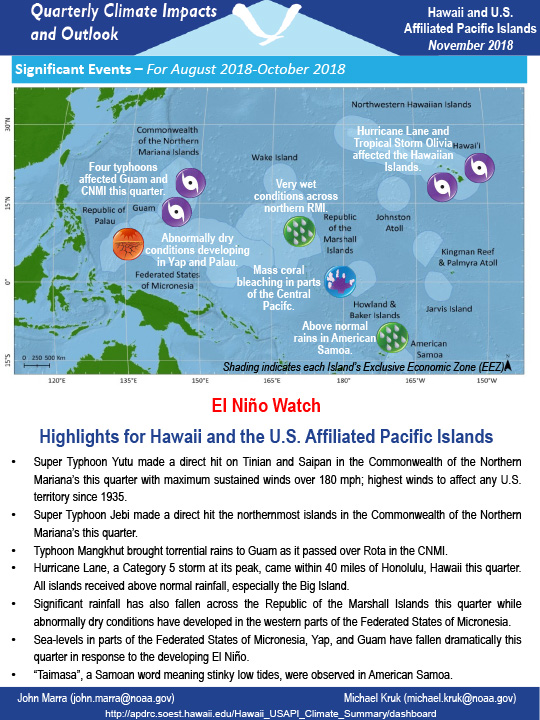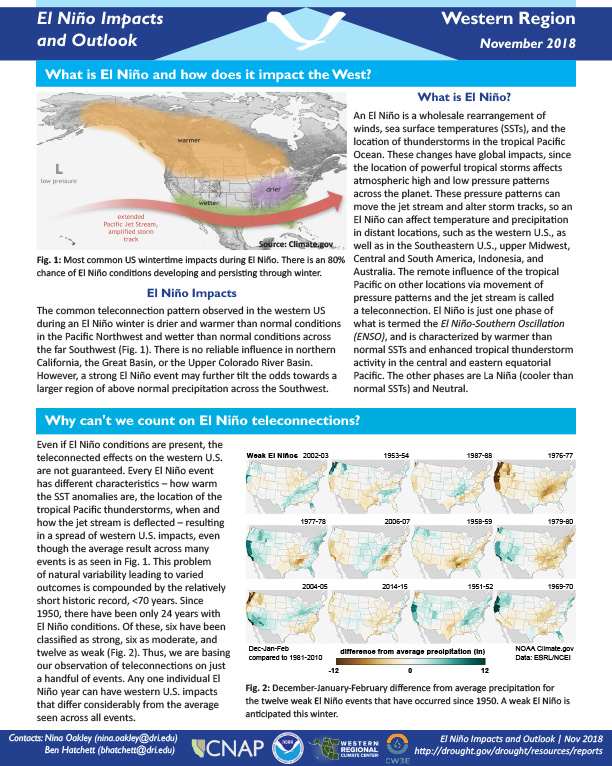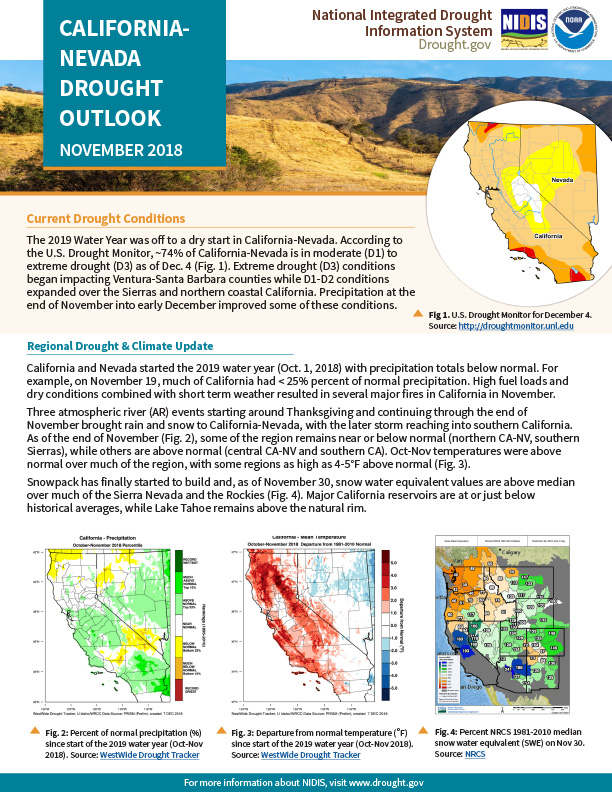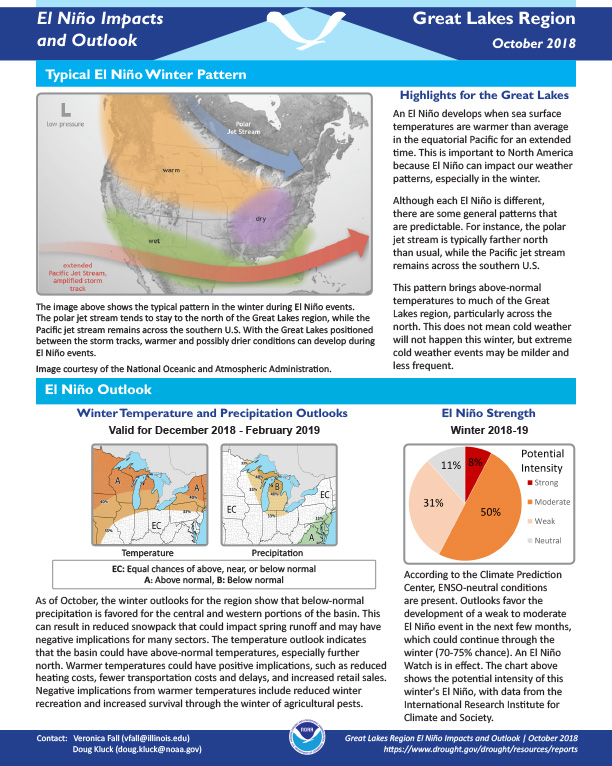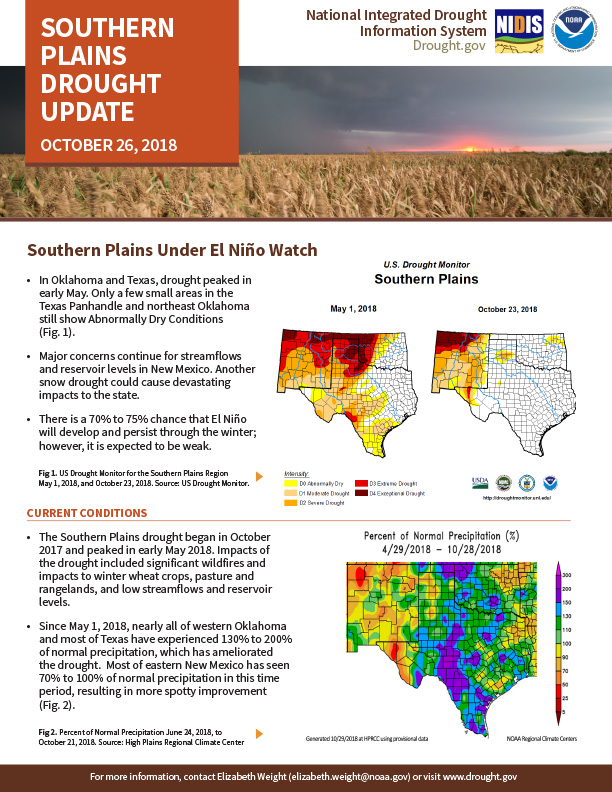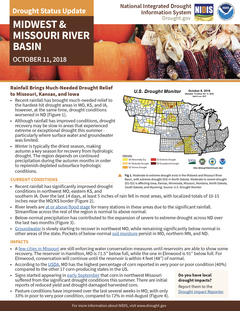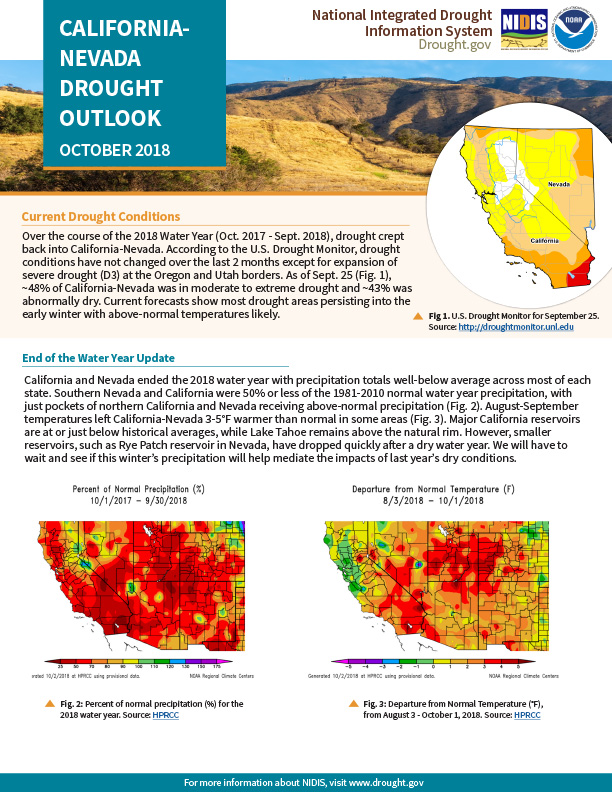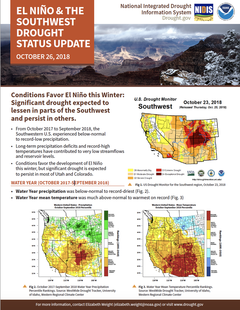Quarterly Climate Impacts and Outlook for Hawaii and the U.S. Pacific Islands Region for August – October 2018. Dated November 2018.
Includes significant events, regional climate overview, and sectoral impacts for August – October 2018; regional outlook for November 2018 – January 2019.
Provides a definition of El Nino; potential winter impacts; the outlook for winter temperatures and precipitation; and a look back at previous El Nino winters.
NOAA’s Regional Climate Services Program created these Outlooks to inform the public about climate impacts within their respective regions. Each regional report contains easy-to-understand language, and anyone can access them through the Drought Portal at https://www.drought.gov/drought/resources/reports.
The 2019 Water Year was off to a dry start in California-Nevada. According to the U.S. Drought Monitor, ~74% of California-Nevada is in moderate (D1) to extreme drought (D3) as of December 4, 2018. Extreme drought (D3) conditions began impacting Ventura-Santa Barbara counties while D1-D2 conditions expanded over the Sierras and northern coastal California. Precipitation at the end of November into early December improved some of these conditions.
Provides a definition of El Nino; the outlook for winter temperatures and precipitation; potential winter and spring impacts; and a look back at previous El Nino winters.
NOAA’s Regional Climate Services Program created these Outlooks to inform the public about climate impacts within their respective regions. Each regional report contains easy-to-understand language, and anyone can access them through the Drought Portal at https://www.drought.gov/drought/resources/reports.
CURRENT CONDITIONS
Provides a definition of El Nino; the outlook for winter temperatures and precipitation; potential winter and spring impacts; and a look back at previous El Nino winters.
NOAA’s Regional Climate Services Program created these Outlooks to inform the public about climate impacts within their respective regions. Each regional report contains easy-to-understand language, and anyone can access them through the Drought Portal at https://www.drought.gov/drought/resources/reports.
Over the course of the 2018 Water Year (Oct. 2017 - Sept. 2018), drought crept back into California-Nevada. According to the U.S. Drought Monitor, drought conditions have not changed over the last 2 months except for expansion of severe drought (D3) at the Oregon and Utah borders. As of Sept. 25, ~48% of California-Nevada was in moderate to extreme drought and ~43% was abnormally dry. Current forecasts show most drought areas persisting into the early winter with above-normal temperatures likely.
From October 2017 to September 2018, the Southwestern U.S. experienced below-normal to record-low precipitation. Long-term precipitation deficits and record-high temperatures have contributed to very low streamflows and reservoir levels. Conditions favor the development of El Niño this winter, but significant drought is expected to persist in most of Utah and Colorado.
WATER YEAR (OCTOBER 2017-SEPTEMBER 2018)
Provides a definition of El Nino; the outlook for winter temperatures and precipitation; potential winter impacts; and a look back at previous El Nino winters.
NOAA’s Regional Climate Services Program created these Outlooks to inform the public about climate impacts within their respective regions. Each regional report contains easy-to-understand language, and anyone can access them through the Drought Portal at https://www.drought.gov/drought/resources/reports.


